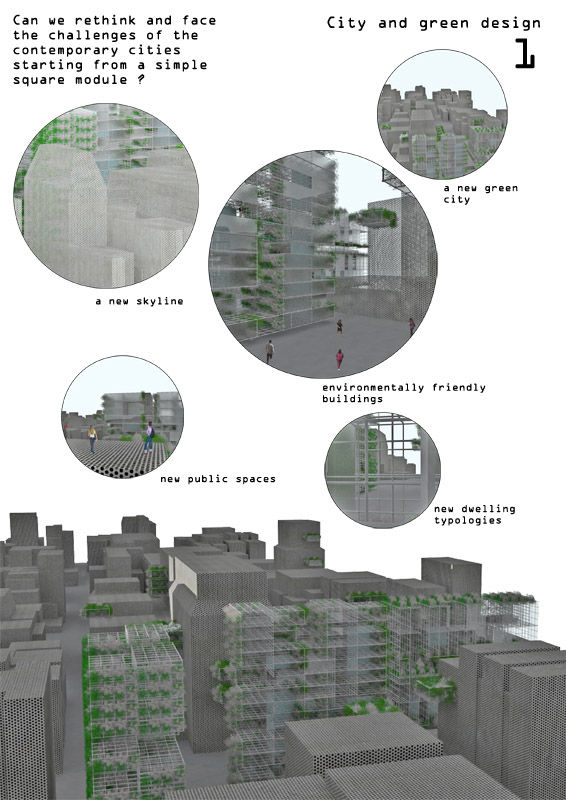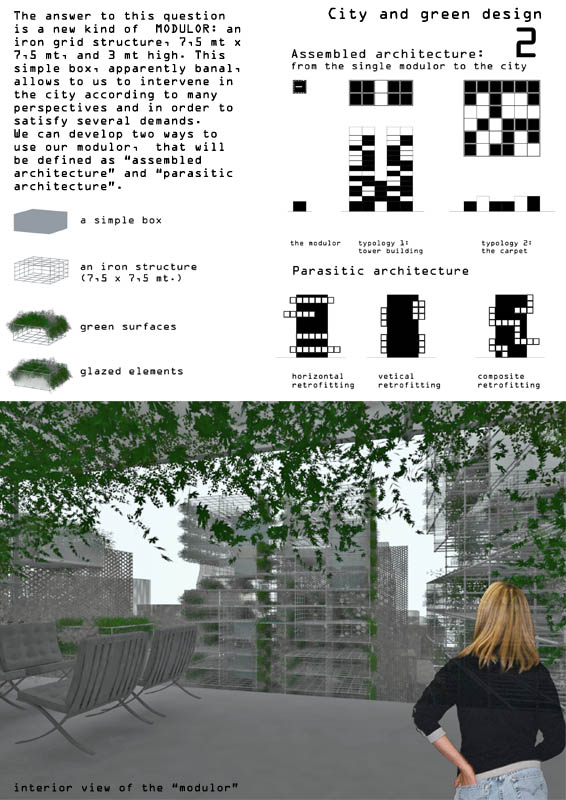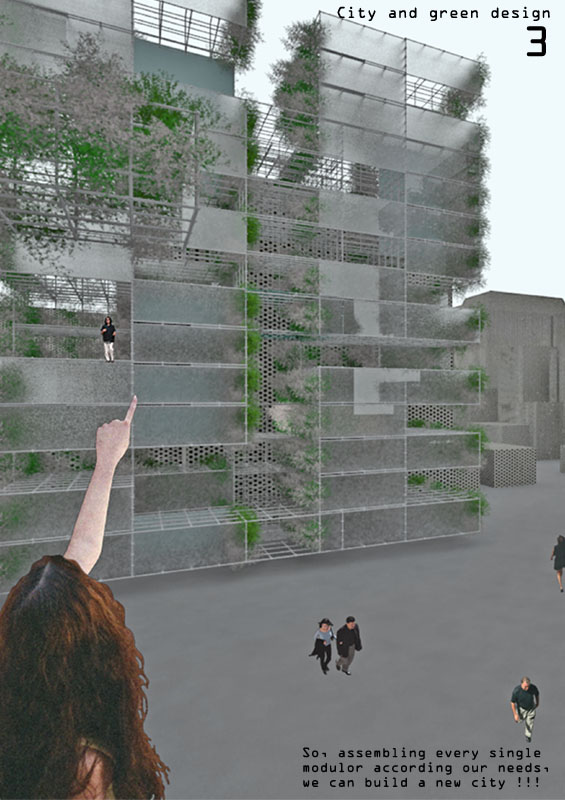
assembled or parasitic architecture ? by Stefano Corbo from italy
designer's own words:
Can we rethink and face the challenges of the contemporary cities starting from a simple square module ? Can we introduce in the city new ways of living, that include a sustainable vision for the public space, the increase of green areas, and better conditions for its inhabitants ?
An answer to these questions is the main goal of the proposal, that is focused on a new kind of modulor: an iron grid structure, 7,5 mt x 7,5 mt, and 3 mt high. This simple box, apparently banal, allows to us to intervene in the city according to many perspectives and in order to satisfy several demands.
We can develop two ways to use our modulor, that can be defined as ASSEMBLED ARCHITECTURE and PARASITIC ARCHITECTURE.
For the first category (ASSEMBLED ARCHITECTURE) we mean that, due to its flexibility and adaptability, modulor can be used as it were a single house for a family, but also can be associated and combined to other modules to create many interesting dwelling typologies and public spaces: it’s just a question to assemble these boxes...
From a single modulor we can build an entire city !!!
Different houses, different buildings, different spaces, with the same starting element.
So we are able to integrate different fabric scales into a coherent vision for the city.
Yes, it’s the always same box, but how can we avoid monotony ???
It’s simple. Every modulor will be covered by a great variety of green surfaces: plants, meadows, also trees. Citizens can choose how to organize their spaces, and their habitations.
Green design means to make green areas as the protagonists of the life in the city. And in this way, they have not only a decorative function, but help to improve the image of the city, its ecosystem, and the material conditions of its inhabitants. It’s simple, cheap, and convenient.
To summarize, we start from a simple iron box; then we add to it a glazed element to ensure comfort; then we covered it with plants and green surfaces. Finally, we can assemble the modulor according our needs, and... here it is, a new city !!!
The PARASITIC ARCHITECTURE is another possible kind of intervention in the contemporary city, without thinking of new buildings or new public spaces.
We’ are going to work on the existing ones.
In this case the modulor will not be the starting point of a new construction, but we will use it to give a new image and a new functionality to all the elements that require some changes. It works as a parasite, it hooks to a building, and eat it.
At the same time, the modulor allows to reconfigure typoogies, functional distributions, and so on; new green spaces and facilites will be created instead of anonymous and useless habitations or hallways. Here we’are talking about a sort of urban retrofitting (retrofitting is the adding of a component or accessory to something that did not have it when it was made). It can be used to describe such processes as obsolescense, performance, transformation and modernisation.
ASSEMBLED ARCHITECTURE or PARASITIC ARCHITECTURE ?
From different points of view, both of them can help us to rethink our contemporary condition, and our ways of living , from the interior of our houses to the exterior of the city.
a new green city
 new dwelling typologies
new dwelling typologies
 new architectures
new architectures